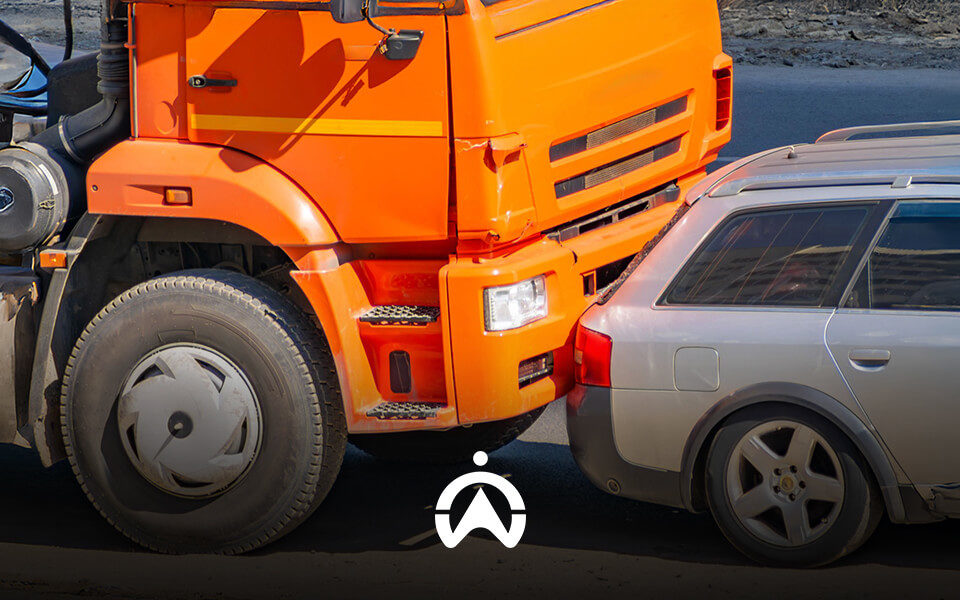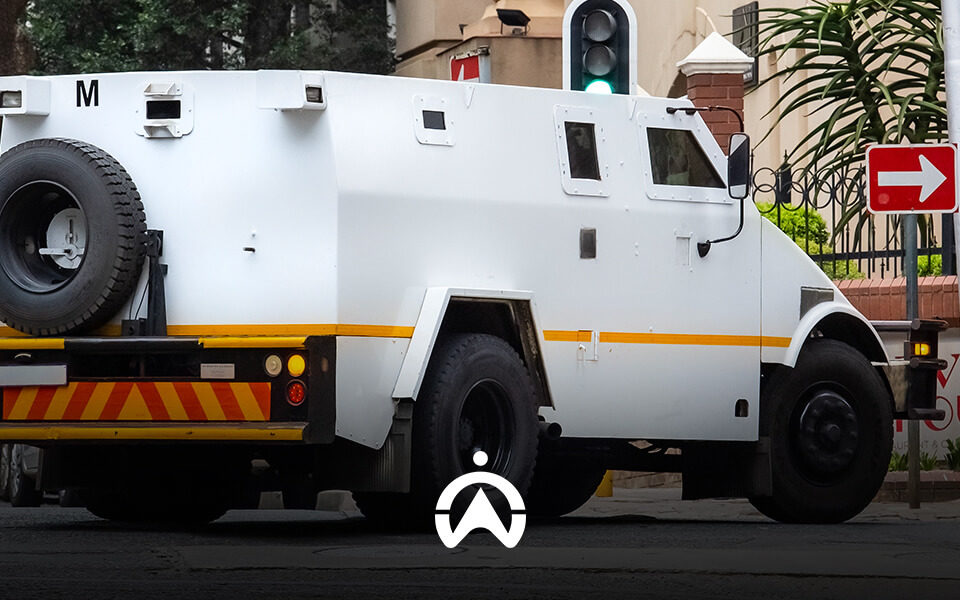Route Planning and Route Optimisation Software Solution for Powerful Fleet Planning
Route optimisation is no longer seen as a luxury feature, and with the explosive growth in online shopping and home deliveries, it’s now a necessity every business should have.
In the race to meet customer demands, route planning and optimisation are vital strategies for efficient travel. They’re the secret sauce that helps businesses make smart delivery decisions, ensuring products and services reach customers swiftly and seamlessly.
Whether you’re a local shop or a global e-commerce giant, embracing route optimisation and planning isn’t just smart—it’s essential for staying ahead in today’s fast-paced market.Let’s see how this advanced tool makes businesses tick.
The challenges of manual route planning
In the past, route planning relied heavily on manual methods, lacking the advanced tools like GPS tracking and fleet telematics that we have today. Fleet managers had to rely on spreadsheets, maps, and guesswork to manage and optimise their operations.
This often led to inefficient management practices, as they had to navigate blindly without real-time insights into their fleet’s activities.
Even though smaller companies still use manual trip planning, it still has its shortcomings. Here are the four top disadvantages of traditional trip planning:
- It’s time-consuming
Plotting routes on a map, considering traffic jams, and factoring in driver breaks takes ages. This time could be better spent focusing on other aspects of your business, like ensuring cargo safety or monitoring fuel consumption per trip.
- Mistakes happen
Manual planning is prone to errors like missing shorter, more fuel-efficient routes or not underestimating travel time, leading to delays, increased expenses, and frustrated customers.
- Constant inefficiency
Identifying the most efficient routes that minimise fuel consumption and maximise deliveries is a complex task when done manually, resulting in inefficiencies within the operation.
- Challenges with dynamic variables Usually, after mapping out a route, the task of considering trip duration, weather, and traffic is rarely checked again as the day goes by. Manual planning struggles to adapt to these factors in real time.
The modern solution: Introducing route planning and route optimisation software
As we’ve explored the drawbacks of manual trip planning, many businesses have realised these limitations and started turning to modern solutions for route planning and optimisation.
But how are these new concepts any different from the tools businesses have been using?
Let’s see how route planning and optimisation offer solutions and improve trip management.
Efficient mapping with route planning
Route planning, in simple terms, is when you manually try to figure out the best way to get from point A to point B. When it comes to deliveries or managing a fleet of vehicles, it’s more than that.
If you’re running a fleet that constantly makes deliveries throughout the day, say a bakery or pharmacy making at-home deliveries, route planning would involve figuring out the order in which to visit all your customers to make the most efficient deliveries.
This could mean:
- Considering traffic patterns; avoid rush hour traffic jams in congested areas like Long Street, Cape Town in the morning and deliver during off-peak hours.
- Striving to minimise distance; consider delivering to suburbs closer to you first before going all the way out of town.
- Planning a logical route; don’t zig-zag across the city, wasting time and fuel.
Route planning is creating the most efficient way to complete a journey with multiple stops, considering various factors to save time and fuel. This line of planning differentiates it from traditional trip planning.
Advanced route optimisation solutions
Route optimisation takes route planning to the next level. The software finds the most efficient routes that minimise travel time, fuel consumption, and vehicle wear and tear. It’s more like a super-smart app that automatically presents the absolute best order to deliver those parcels.
This way, your delivery guy travels the shortest distance, avoids traffic jams, and gets all the deliveries done faster.
It considers factors like:
- Real-time traffic conditions
- Weather conditions
- Vehicle capacities
- Driver availability
- Delivery priorities
Unlike route planning, which may involve manual processes or basic algorithms, route optimisation relies on advanced software algorithms that generate optimised routes tailored to each fleet’s specific requirement.
.png)
Route planning vs. route optimisation: What’s the difference?
The differences between route planning and route optimisation might be confusing, so let’s clear the air and state the differences.
Route planning simply involves pointing out the sequence of stops for a delivery route and manually planning the route. While it’s a good starting point, it doesn’t optimise for efficiency. Route optimisation software improves this process by using advanced algorithms and bringing your business these perks:
- Save on costs:
Businesses can save a lot of money by making routes more efficient and using less fuel. This means spending less on fuel, repairs, and general running costs.
- Boost efficiency:
When routes are optimised, vehicles can do their jobs quicker and get more done in less time. It’s like getting a productivity boost, allowing businesses to achieve more with their resources.
- Happy customers:
Timely deliveries are vital for keeping customers happy. By consistently delivering on time and giving accurate arrival estimates, businesses can create positive customer experiences, leading to better reviews and more loyal customers.
- Eco-friendly moves:
Route optimisation helps protect the environment by reducing unnecessary driving and fuel use. It’s a greener approach that shows a commitment to reducing emissions and looking after the planet.
- Smarter resource use:
Optimised routes mean businesses are using their vehicles, drivers, and equipment in the best possible way. This helps them get the most out of their investments and run more efficiently overall.
- Stay flexible:
Route optimisation software lets businesses adapt quickly to changes. Whether it’s unexpected traffic or last-minute delivery changes, businesses can stay nimble and keep things running smoothly.
- Data-driven decisions: Route optimisation software provides valuable data businesses can use to make smart choices. By examining things like delivery times and fuel use, businesses can spot patterns, find areas for improvement, and keep getting better over time.
How route optimisation technology makes your business tick
Let’s use the pharmacy business as an example. Say you’re planning deliveries for a busy week with multiple stops for your drivers spread across town, and you’ve just fed this information to the system. What happens next?
Here’s how to take the chaos out of your delivery schedule:
Step 1: Feed it information
Enter all your delivery addresses into the software; you can even specify delivery windows for some customers who need their parcels at a certain time. The software calculates the distances between each stop, giving you a basic idea of travel time.
Step 2: Analysis
It carefully analyses the data we’ve gathered, considering factors like delivery locations, time constraints, vehicle capacities, and real-time conditions such as traffic patterns and road closures.
Step 3: Optimisation
This is where the magic happens. Using sophisticated algorithms, the software crunches the numbers to generate the most efficient routes for our vehicles. These routes are designed to minimise travel time, fuel usage, and vehicle wear and tear while ensuring that all deliveries are made on time. You can factor in driver breaks.
The software will present you with this information:
- A clear map shows the most efficient order to tackle all your deliveries for the week.
- Drivers receive the optimised route on their phones, complete with turn-by-turn navigation and delivery information for each stop.
- You can track driver progress and delivery status in real time, giving you peace of mind and allowing you to manage any last-minute changes.
Step 4: Real-time adjustments
As the week progresses, the software continuously monitors real-time conditions and adjusts routes as needed. Whether it’s unexpected traffic jams or last-minute changes to delivery schedules, the software ensures that our vehicles stay on the most efficient path.
Step 5: The feedback loop
As deliveries are completed, the software collects data on actual performance, including delivery times and fuel consumption. This data is then used to fine-tune and improve future route planning, ensuring that we always optimise our deliveries to the fullest extent possible.
And just like that, the busy week has gone without a hitch. Route optimisation software takes the guesswork and frustration out of planning deliveries.
This is just one week. Imagine what you can accomplish with this software running for a whole financial year. You can focus on running your business while your deliveries run smoothly.
List of must-have features for a powerful routing software
What makes this technology able to do all the things that make your delivery management that much easier? It’s got smart features!
- Multi-stop planning:
This core functionality is the foundation of effective route optimisation. The software should seamlessly handle a high volume of delivery stops and generate the most efficient route sequence, minimising travel time and maximising productivity. Imagine a sophisticated map app that intelligently determines the optimal order to visit all your destinations.
- Real-time traffic integration:
Unforeseen traffic congestion can disrupt even the most meticulously planned routes. Look for software that integrates live traffic data feeds. This allows for dynamic route adjustments, ensuring deliveries stay on schedule despite unexpected roadblocks. Think of your routes as adaptable entities, constantly adjusting to real-time traffic conditions.
- Driver constraints and preferences:
A happy and well-rested workforce is paramount for efficient deliveries. Choose software that allows you to incorporate driver preferences and constraints. This could include factoring in driver breaks, specific skill sets required for certain deliveries, or even vehicle types (such as refrigerated vans for temperature-controlled goods).
- Advanced route optimisation algorithms:
Beyond basic distance calculations, advanced route optimisation requires sophisticated algorithms. These algorithms should consider many factors, including one-way streets, traffic light patterns, and historical traffic data, to create the most efficient routes possible. This ensures fuel costs are minimised and delivery times are optimised.
- Mobile app functionality for drivers:
Paper maps are a relic of the past. The software should provide user-friendly mobile applications for drivers. These apps should display optimised routes with turn-by-turn navigation and clear instructions for each stop. This empowers drivers to navigate efficiently and reduces the risk of confusion or delays.
- Robust reporting and analytics: Data is a valuable asset for continuous improvement. Effective route optimisation software should generate comprehensive reports on key performance indicators (KPIs) such as on-time delivery rates, fuel consumption, and driver performance.
By analysing these reports, you can identify areas for improvement, further refine routes, and make data-driven decisions for your fleet management strategy.

How do I know if my business needs these route optimisation solutions?
Here are some tell-tale indicators that it’s time to consider a fleet management system, route optimisation software and the amazing tools it comes with.
- Late deliveries: Inconsistent delivery times and frustrated customers are sure signs that your current route planning methods aren’t working.
- High fuel costs: Inefficient routing can lead to both excessive travel time and unnecessary mileage, which can significantly inflate your fuel costs.
- Inefficient routes: Drivers spend time stuck in traffic or backtracking unnecessarily.
- Unhappy, fatigued drivers: Your drivers experience long hours of driving and inefficient routes, which can result in driver fatigue, stress, and potentially risky driving habits.
- Lack of visibility: Without proper route planning tools, it is difficult to track delivery performance, identify areas for improvement, make informed decisions, and even follow up on tasks.
Have you experienced all these hiccups, and are you ready to make the switch to improved deliveries? It’s time to get Cartrack’s route optimisation and fleet management solutions.
Route optimisation made easy with Cartrack’s fleet management solutions
Cartrack Nigeria is a leading provider of smart fleet management solutions designed to assist CEOs, business owners, and managers in improving and optimising the everyday routes their fleet uses.
When it comes to deliveries, Cartrack solutions have proven to improve fleet operations, reduce fuel consumption, and save on fleet costs, leaving managers with more time to focus on improving their fleet and operations.
Here are some Cartrack Nigeria features that make it all possible:
- Cartrack Delivery
Cartrack’s Delivery tool simplifies task assignment and real-time tracking from dispatch to delivery. Automating processes offers full visibility into task progress and allows easy job allocation to drivers. Through route optimisation, Delivery provides quicker route options, reducing travel time, fuel consumption, and turnaround times.
- GPS tracking
Cartrack’s GPS tracking provides real-time location and other vehicle insights for managers to enhance operational efficiency. Cartrack Nigeria helps cut costs per job and improve fleet visibility and overall vehicle safety.
- Geofencing
Cartrack’s geofencing feature allows users to set virtual boundaries around specific locations. Managers can monitor vehicles entering or exiting zones, such as warehouses or delivery drop-off locations, providing wider visibility of vehicle activity and ensuring drivers stay on schedule with their tasks.
Realise the power of Cartrack’s route optimisation
The Salt Block & Deli and Baron’s Meat Co. strive to deliver their meat and produce as fresh as possible to their clients. With Cartrack’s route optimisation solutions, The Salt Block & Deli experienced improved tracking on their vehicles and enhanced fleet productivity.
“[With Cartrack] we can plan our routes, and when we go back and look at the history, we can see exactly how long it took from one area to the next,” said Leriche Beneke, CEO of The Salt Block & Deli and the Baron’s Meat Co.
Leriche is just one of the thousands of business owners that Cartrack has assisted with their fleets. Our route optimisation solutions can fit into any business and within any industry, even yours.
Start saving on travel costs and improve fleet efficiency with Cartrack Nigeria
With our proven track record of delivering reliable solutions, you can trust Cartrack to improve your trip strategies and drive efficiency across your operations.
Contact Cartrack Nigeria today for a free quote and discover how our proven solutions can enhance your trip planning and delivery efforts!




